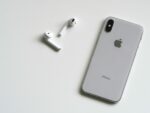With Steve Jobs at the helm, Apple reshaped the technological landscape. The Mac. The iPod. The iMac. The iPhone. The iPad. iOS. Siri. The list goes on. Jobs even found time to revolutionize animated films with a little company called Pixar.
In 2011, Tim Cook took over as CEO. He inherited the tablet boom from Jobs, and in the two years since, Apple has done little more than ride the wave, releasing version after version of iPhones, iPads, desktop and mobile operating systems. Expertly developed and designed as many of those updates were, Apple’s track record in the past two years has simply lacked its former spark of authentic innovation.
Maybe it’s unfair to compare Cook—an accomplished businessman in his own right, who spent long stretches at Intelligent Electronics and IBM before being hired by Jobs in 1998—to a global icon and the subject of two biopic films, whose disciples are attempting to crowdfund a massive likeness of the tech demigod to tower over San Francisco.
Nonetheless, the newest slate of Apple offerings leaves much to be desired. Look no further than the new iPhones, whose most glaring features are skin deep—plastic casings and shiny new color schemes. The iPhone 5s does feature some hardware innovations: a new fingerprint sensor and a 64-bit processor. But what Cook was really jazzed about were the new gold, silver and “space gray” colors.
The iPhone 5c was, plainly speaking, phoned in. It’s a repurposed iPhone 5 with bright plastic cases, marketed as a low-cost option for emerging global markets yet still priced steeply at $549. Not to mention its tagline: “Unapologetically plastic.” That’s not something to brag about.
Even iOS 7, the company’s most radical mobile OS redesign in years, is more of an aesthetic overhaul than a truly groundbreaking improvement in functionality. Nifty new features like Control Center may appease Apple fanboys, but iOS 7 won’t convert many from Android or Windows.
During the Jobs era, it was unheard of to see a 10% stock drop a week after a new product announcement, but it’s a sure sign that Apple, at least in terms of innovation, just ain’t what it used to be.
None of this is to say Apple can’t or won’t overcome the rut of status quo thinking it’s fallen passively into, but it’s hard to shake the image of Tim Cook clopping around Apple’s Cupertino campus in shoes he may never be able to fill.





